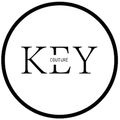Interviews
AWEX wool indicator finishes 1% lower last week
14 May '12
4 min read
Australian Wool Industries Secretariat Inc (AWIS) releases wool sale report for the week ending May 11. The Australian Wool Exchange (AWEX) Regional Indicators finished 1.0% lower, on average, at sales in Sydney, Melbourne and Fremantle this week when the US exchange rate fell by 1.9%.
This week's market was again characterised by soft demand. It eased on both days in the East, but showed some recovery in the West on Thursday, when the AWEX WMI rose by 9¢, led by good demand for wool from 18.5 to 19.5 microns. Some of the season's leading buyers were quieter than usual on Wednesday, but were more active on Thursday.
Looking at the market in US terms shows that the Eastern Market Indicator (EMI) eased by 38¢ on Wednesday, but was settled on Thursday when it moved down by an additional 1¢. Global financial markets were unsettled this week. The history of the last four years indicates that both the US exchange rate and prices in US currency fall at such times. How much of this week's fall in prices in US currency was due to this and how much was due to other factors is not known.
The better wools continue to be sought after and the poorer type wools discounted. All Merino and coarse crossbred average AWEX Micron Price Guide (MPGs) eased during the week. Fine crossbred wools were the only wools whose average AWEX Micron Price Guide (MPGs) moved up during the week.
Looking at the AWEX Market Indicators at the time last year - the Eastern Market Indicator (EMI) at 1155¢ is 168¢ less than in the same week last year; and the season average of 1219¢ is 125¢ higher than the season average at the end of Week 45 last year. The WMI was 103¢ less than in the same week last year; and the season average of 1173¢ is 149¢ greater than the season average at the end of Week 45 last year.
From a broader perspective, the market remains at high levels, particularly in US Currency, where the Eastern Market Indicator (EMI) is the equivalent of 1167 US¢.
In other countries, the Cape Wools Indicator in South Africa was down by 1.0% and their US exchange rate was down by 2.2%.
33,168 bales were on offer, compared with 42,540 bales last week. 15.3% were passed in, comprised of 10.6% in Sydney, 10.0% in Melbourne and 33.6% in Fremantle. Pass-in rates for Merino fleece and skirtings were 15.9% and 18.6%, respectively. 28,092 bales were cleared to the trade. The year-to-date offering is now 55,816 bales less (3.2%) less than at the end of the same week last year.
Although it was Budget week in Australia, the main factor influencing current Australian exchanges rates is again the uncertainties within the Eurozone, particularly in Greece; and the resulting loss of global confidence.
The results of last weekend's elections in Greece have left an uncertain outcome about whether the country will now be governed by parties who support the EU imposed austerity measures; or by parties that are opposed to the austerity measure. Global stock markets weakened and the, now familiar, transfer of investor funds from Australia to the “safe havens” of US Treasury bonds, the Swiss Franc and the Yen occurred, resulting in lower Australian exchange rates.
This week's market was again characterised by soft demand. It eased on both days in the East, but showed some recovery in the West on Thursday, when the AWEX WMI rose by 9¢, led by good demand for wool from 18.5 to 19.5 microns. Some of the season's leading buyers were quieter than usual on Wednesday, but were more active on Thursday.
Looking at the market in US terms shows that the Eastern Market Indicator (EMI) eased by 38¢ on Wednesday, but was settled on Thursday when it moved down by an additional 1¢. Global financial markets were unsettled this week. The history of the last four years indicates that both the US exchange rate and prices in US currency fall at such times. How much of this week's fall in prices in US currency was due to this and how much was due to other factors is not known.
The better wools continue to be sought after and the poorer type wools discounted. All Merino and coarse crossbred average AWEX Micron Price Guide (MPGs) eased during the week. Fine crossbred wools were the only wools whose average AWEX Micron Price Guide (MPGs) moved up during the week.
Looking at the AWEX Market Indicators at the time last year - the Eastern Market Indicator (EMI) at 1155¢ is 168¢ less than in the same week last year; and the season average of 1219¢ is 125¢ higher than the season average at the end of Week 45 last year. The WMI was 103¢ less than in the same week last year; and the season average of 1173¢ is 149¢ greater than the season average at the end of Week 45 last year.
From a broader perspective, the market remains at high levels, particularly in US Currency, where the Eastern Market Indicator (EMI) is the equivalent of 1167 US¢.
In other countries, the Cape Wools Indicator in South Africa was down by 1.0% and their US exchange rate was down by 2.2%.
33,168 bales were on offer, compared with 42,540 bales last week. 15.3% were passed in, comprised of 10.6% in Sydney, 10.0% in Melbourne and 33.6% in Fremantle. Pass-in rates for Merino fleece and skirtings were 15.9% and 18.6%, respectively. 28,092 bales were cleared to the trade. The year-to-date offering is now 55,816 bales less (3.2%) less than at the end of the same week last year.
Although it was Budget week in Australia, the main factor influencing current Australian exchanges rates is again the uncertainties within the Eurozone, particularly in Greece; and the resulting loss of global confidence.
The results of last weekend's elections in Greece have left an uncertain outcome about whether the country will now be governed by parties who support the EU imposed austerity measures; or by parties that are opposed to the austerity measure. Global stock markets weakened and the, now familiar, transfer of investor funds from Australia to the “safe havens” of US Treasury bonds, the Swiss Franc and the Yen occurred, resulting in lower Australian exchange rates.
Popular News
Leave your Comments
Editor’s Pick
































-Ltd..jpg?tr=w-120,h-60,c-at_max,cm-pad_resize,bg-ffffff)





.jpg?tr=w-120,h-60,c-at_max,cm-pad_resize,bg-ffffff)
.jpg?tr=w-120,h-60,c-at_max,cm-pad_resize,bg-ffffff)






